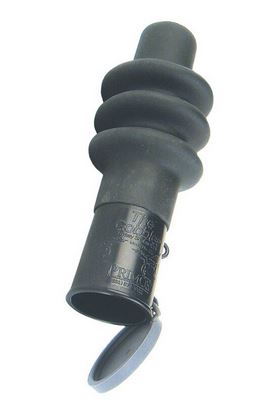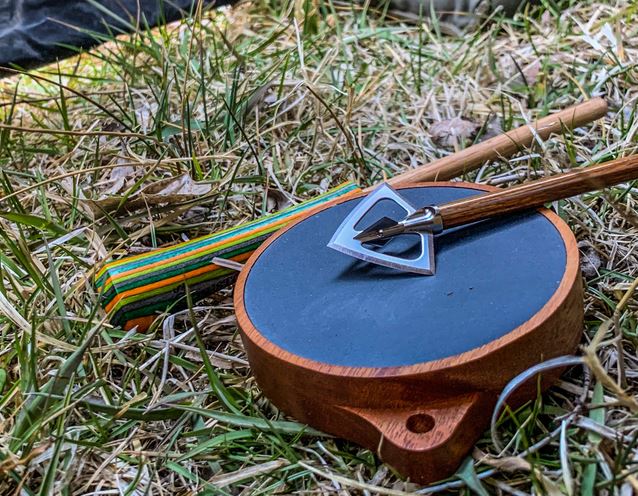Posted by Dan Carlson on Mar 1st 2025
What's the best call for turkey hunting?
How to Determine What Turkey Call You Need for Hunting
Spring is here and so is turkey season. One of the keys to a successful turkey hunt lies in the ability to effectively communicate with the bearded bird. Choosing the right turkey call can make all the difference in attracting the wild turkeys.
Turkey calling is fun. The birds have a language of their own consisting of "gobbles", "clucks", "putts", "purrs", "yelps", "cutts", "whines", "cackles","kee-kees" and more. Learning to reproduce these sounds and how to employ them in “talking” to wild turkeys takes time. But modern calls are so effective, accurate and easy to use that even novices can learn to talk turkey like a pro with a little practice.
Understanding the Types of Turkey Calls
Box Calls: Box calls are popular among hunters due to their ease of use. consist of two main parts; the box and the paddle, producing a variety of turkey sounds with minimal effort. Box calls are great for beginners and can produce loud, clear calls that carry over long distances.
Sound is made by scraping the paddle across the top of the box. Hunters can vary the amount of pressure used in this process, along with the length of each stroke, to create a range or turkey sounds. Box calls are lightweight and easy to use. Even a beginner can be producing cuts, yelps, purrs and clucks in no time. The price of a box call depends on how fancy you want to get. Basic box calls run less than $20, or you can spend more than $100 for a finely crafted, hand-tuned work of art. A downside to box calls is that they require use of two hands, so you have to be careful not to move much when you pick up and aim your bow or shotgun.
Pot Calls (Slate Calls): Another call that uses friction to produce sound is the pot call. These also consist of two parts, the pot and the striker. The hockey-puck-size pot is held in one hand and the striker is held like a pen or stylus in the other. Noise is made by scraping the tip of the striker across the flat surface material in the pot. That pot material is typically slate, ceramic or glass, and the sound produced is controlled by pressure and scrape length. Watching a skilled pot call user work is a wonder to behold. The volume, tone and duration of each cut, cluck, yelp or pur seems to have endless variation. Pot calls excel when trying to sweet-talk a turkey in just a few more yards for a shot. Pot calls range in price from $20 to $90. The downside of using pot calls is that doing so requires two hands.
Mouth Calls (Diaphragm Calls): Mouth Calls are the lightest and least expensive turkey calls available. They’re easy to keep in a pocket and forget they’re there, run less than $7 for one with complete sets less than $35, and they produce wonderful turkey sounds. And because the entire call is in your mouth, you have both hands free, letting you talk to the turkey right up to the moment you pull the trigger or release an arrow. The downside? It takes time to master a mouth call. You could say they’re the least user-friendly of the turkey call options. Mouth calls consist of one or more “reeds” stretched in a semi-circular frame. The reed is actually made of latex in many mouth calls, so keep that in mind if you have a latex allergy. Sound is produced by pressing the call up against the roof of your mouth with your tongue and exhaling to blow air across the reeds. Varying tongue pressure, force and duration of exhale is what produces the different sounds. Mouth calls can be sound-specific, meaning one may do certain sounds better than another. That’s why some turkey hunters carry a full set of these calls. But there are also very good “one call does all” options.
 Shaker Call: For locating and challenging a big tom turkey in the area, a shaker call is just the thing you need. Like the name implies, a vigorous shake of the call with one hand produces a loud and furious gobble sure to get the attention of other turkeys nearby. Hunters will typically use these to find where a male turkey is in vicinity to the blind or hiding spot, and then switch to other calls to draw the tom in closer. These are the easiest kind of call to use – just shake it – and they’re quite affordable with a price tag around $20.
Shaker Call: For locating and challenging a big tom turkey in the area, a shaker call is just the thing you need. Like the name implies, a vigorous shake of the call with one hand produces a loud and furious gobble sure to get the attention of other turkeys nearby. Hunters will typically use these to find where a male turkey is in vicinity to the blind or hiding spot, and then switch to other calls to draw the tom in closer. These are the easiest kind of call to use – just shake it – and they’re quite affordable with a price tag around $20.
Electronic Calls: For those looking for convenience and a higher volume, electronic calls can be a great option. They can produce a wide variety of turkey sounds at the push of a button, though some hunters prefer the authenticity of manual calls.
Nexgen Outfitters has a nice selection of turkey calls, as well as experts on staff to answer any questions you may have about turkey hunting. Few hunting experiences are more gratifying than locating a big turkey, calling him in, and making the shot. Let us help you get started on that hunting goal today.




